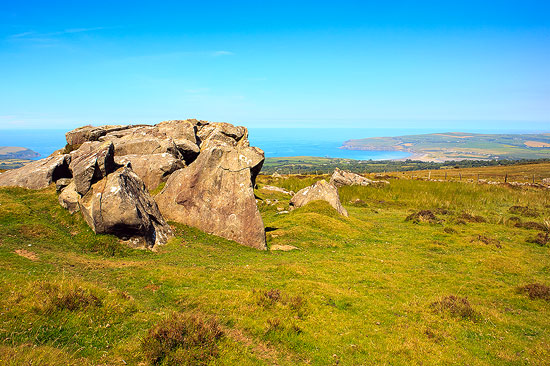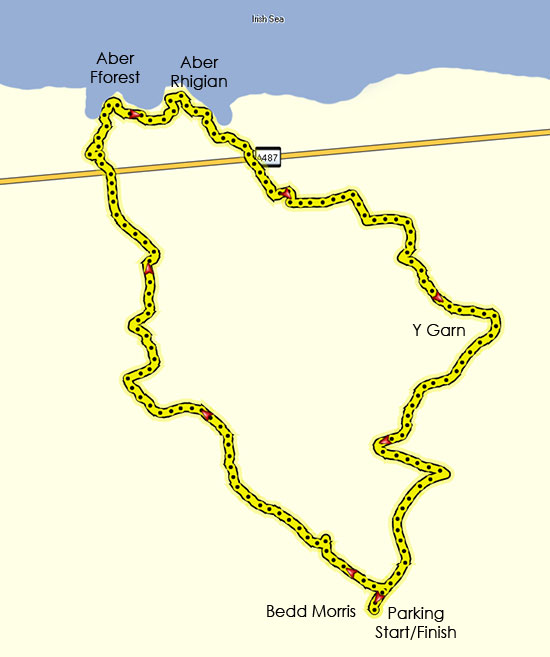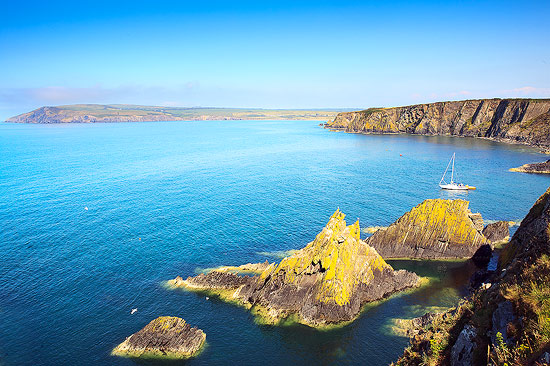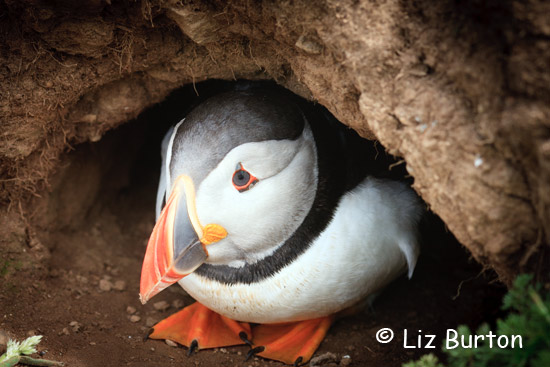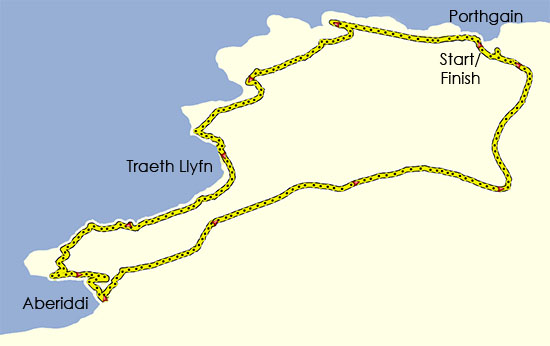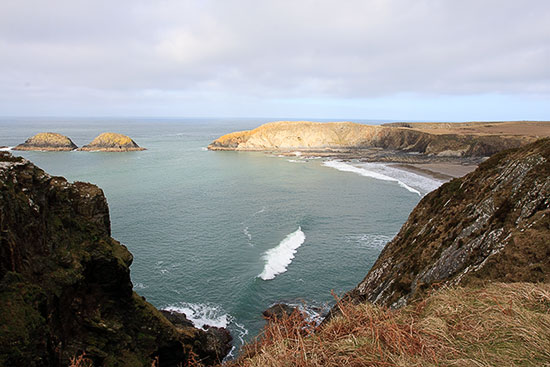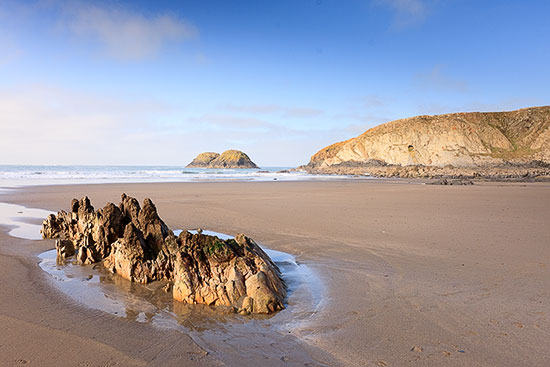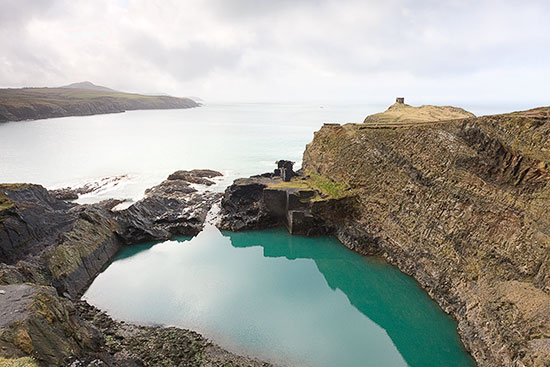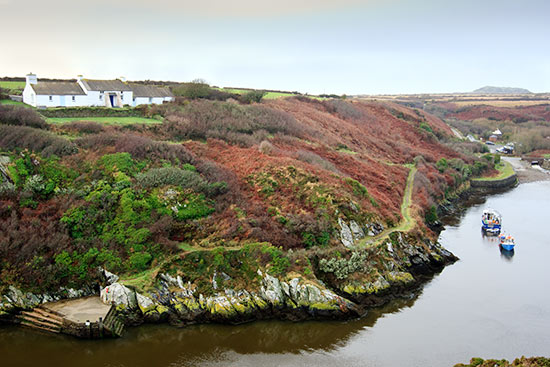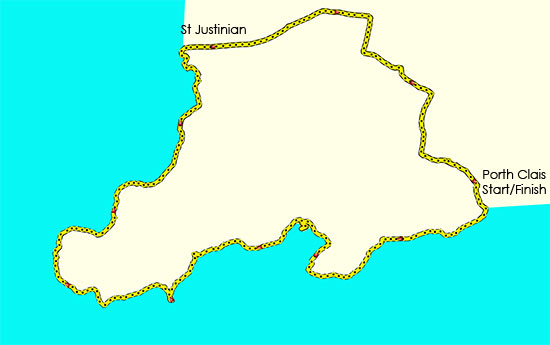Monday the 16th January 2012 turned out to be quite a pleasant sunny day so having made some sandwiches and packed the camera we set of to Mynachlog-ddu, which means Black Monastery in Welsh, to explore some of the Preseli Hills.

This is wonderful countryside and an area rich with ancient monuments and mysterious places; not to mention being the source of the stone for the inner circle at Stonehenge.
We parked in the car park just where you enter the village and then walked north up the road for a few hundred yards before turning left along the road then after a little while took a right turn which crosses a cattle grid onto the common.
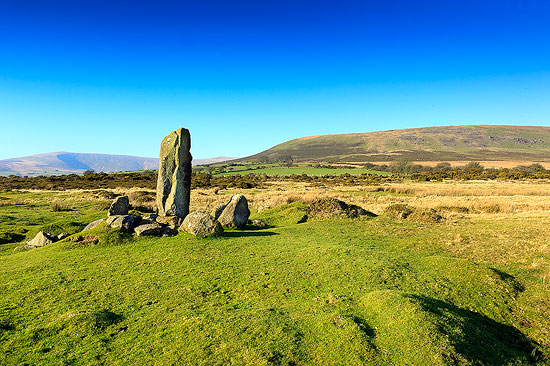
Follow the road across the common, passing the Bluestones Monument, and up to where the bridleway leaves the road (it is also possible to park here if you want to drive to this point). Leave the road and head gently uphill going virtually due north. The gradient is gentle with spectacular views. The path can get boggy in places and needs a little careful negotiation. Eventually, near the ridge, the path meets another path crossing at ninety degrees. Take a right turn (East) and continue up towards the large stones/cairn, Carn Bica (shown below).
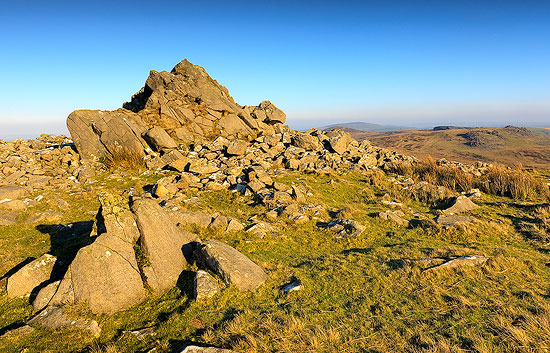
From here you walk down to Bedd Arthur (Arthur’s Grave) a small stone circle. This so-called stone circle lies overlooking the Bluestones outcrop of Carn Meini. It is actually oval or horse-shoe shaped leading to speculation that it may have been this site which influenced the original horseshoe of Bluestones at Stonehenge.
It comprises thirteen small standing stones along with two or three more now fallen. Some believe it may be a henge – others claim it is the remains of a small portal dolmen.
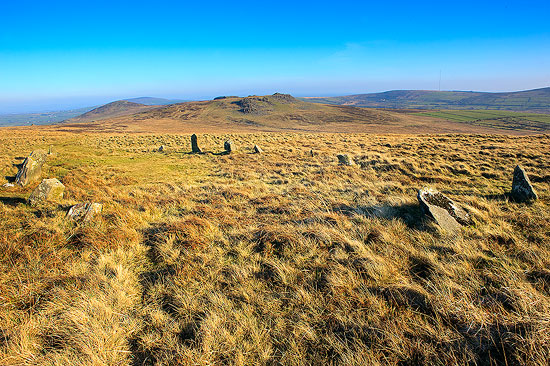
From Bedd Arthur continue in an Easterly direction along the track eventually you will pass behind a large conifer plantation, that looks very alien in this wild landscape, before descending back down to the road.
At this point note the memorial stone and take a moment to remember that what is now taken for granted (access to the Preseli Mountains and their prehistoric remains) was once nearly denied to the public. The plaque reads:


